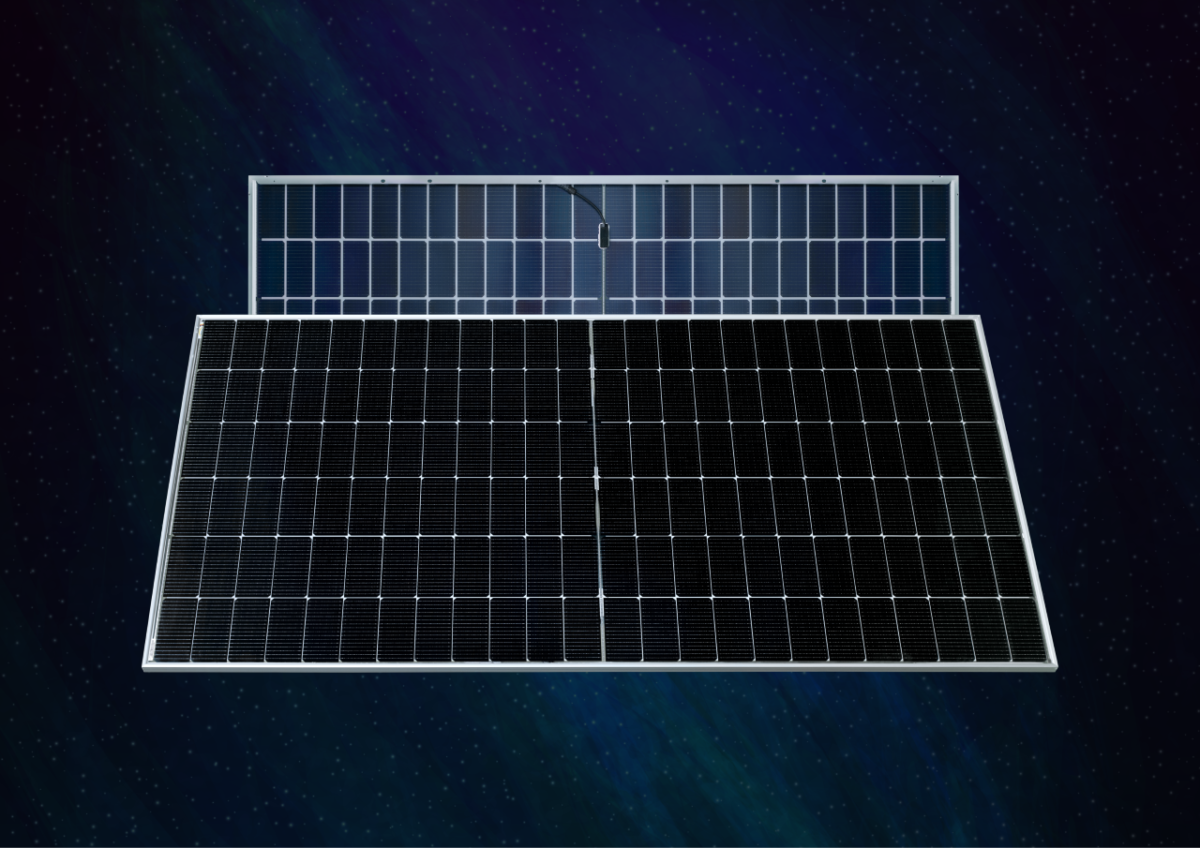AE Solar has unveiled three different solar modules based on n-type tunnel oxide passivated contacts (TOPCon) cell technology.
“The new module will be produced at our 1,500 MW factory in China were we recently upgraded our production lines,” a company spokesperson told pv magazine. “The modules have a glass-glass bill of materials with polyolefin elastomer (POE) as encapsulation material. This makes the module highly durable and perfect not only for moderate climates but also for extreme climates such as deserts or tropical areas. The modules show relatively higher durability against wind and snow compared to typical single-glass modules.”
The largest module series includes five panel versions with power outputs of 555 W to 575 W and power conversion efficiency ranging from 21.50% to 22.28%. The open-circuit voltage is between 50.07 V and 50.68 V and the short-circuit current is between 14.07 A and 14.31 A. The modules have a see 2,278 mm x 1,133 mm x 35 mm and weigh in at 33 kg.
The mid-size series consists of five products with wattage spanning from 460 W to 480 W and efficiency comprised between 21.26% and 22.18%. The open-circuit voltage is between 42.05 V and 42.71 V and the short-circuit current is between 13.99 A and 14.33 A. The modules measure 1,910 mm x 1,133 mm x 30 mm and weigh 29 kg.
The smallest series features five modules with a power output ranging from 410 W to 430 W and an efficiency of 20.99% to 22.01%. These panels measure 1,724 mm x 1,133 mm x 30 mm and weigh 26 kg. Their open-circuit voltage is between 37.45 V and 38.26 V and the short-circuit current is between 13.88 A and 14.17 A.
All panels have an operating temperature between -40 C and 85 C and a temperature coefficient of -0.35% per degree Celsius. They all feature junction boxes with IP 68 ratings, 20 mm solar glass, and 30 mm anodized aluminum alloy frames.
The manufacturer offers a 15-year product warranty and a 30-year power output guarantee for 87.4% of the initial yield. It said the TOPCon technology offers advantages over conventional monocrystalline PERC products, including lower degradation rates in the first year due to light-induced degradation (LID) or light-elevated temperature-induced degradation (LeTID).
“The TOPCon modules have a very close efficiency to heterojunction (HTJ) and interdigitated back contact (IBC) solar cells with a positive factor of a better price and higher stability in the supply chain,” said the company.
*The article was amended on October 12 to reflect that the company's manufacturing facility in China has a capacity of 1.5 GW.
This content is protected by copyright and may not be reused. If you want to cooperate with us and would like to reuse some of our content, please contact: editors@pv-magazine.com.




By submitting this form you agree to pv magazine using your data for the purposes of publishing your comment.
Your personal data will only be disclosed or otherwise transmitted to third parties for the purposes of spam filtering or if this is necessary for technical maintenance of the website. Any other transfer to third parties will not take place unless this is justified on the basis of applicable data protection regulations or if pv magazine is legally obliged to do so.
You may revoke this consent at any time with effect for the future, in which case your personal data will be deleted immediately. Otherwise, your data will be deleted if pv magazine has processed your request or the purpose of data storage is fulfilled.
Further information on data privacy can be found in our Data Protection Policy.